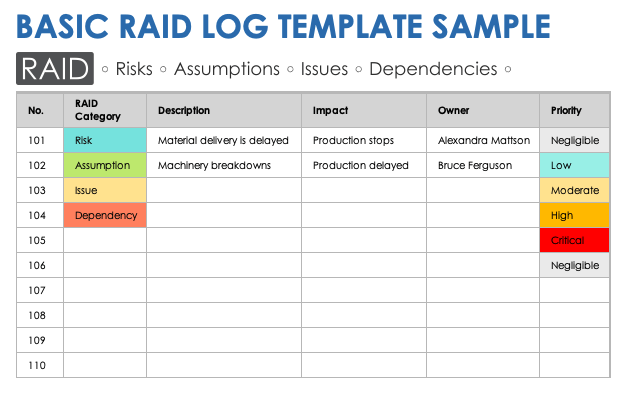
What Is RAID in Project Management? (With Pros and Cons)
Last updated: December 01, 2025 Read in fullscreen view
- 01 Aug 2024
 The Standish Group report 83.9% of IT projects partially or completely fail 150/1772
The Standish Group report 83.9% of IT projects partially or completely fail 150/1772 - 13 Apr 2024
 Lessons on Teamwork and Leadership from Chinese story book "Journey to the West" 41/949
Lessons on Teamwork and Leadership from Chinese story book "Journey to the West" 41/949 - 15 Feb 2024
 What is a Cut-Over in Software Development? 38/1197
What is a Cut-Over in Software Development? 38/1197 - 02 Nov 2023
 Differences between software walkthrough, review, and inspection 27/2004
Differences between software walkthrough, review, and inspection 27/2004 - 02 Nov 2021
 What is Terms of Reference (ToR)? 23/1466
What is Terms of Reference (ToR)? 23/1466 - 18 Oct 2020
 How to use the "Knowns" and "Unknowns" technique to manage assumptions 21/989
How to use the "Knowns" and "Unknowns" technique to manage assumptions 21/989 - 01 Oct 2020
 Fail fast, learn faster with Agile methodology 13/973
Fail fast, learn faster with Agile methodology 13/973 - 03 Apr 2022
 Microsoft Solutions Framework (MSF) 12/1157
Microsoft Solutions Framework (MSF) 12/1157 - 12 Oct 2022
 14 Common Reasons Software Projects Fail (And How To Avoid Them) 10/504
14 Common Reasons Software Projects Fail (And How To Avoid Them) 10/504 - 18 Dec 2023
 The Cone of Uncertainty in Scrum & Requirement Definition 8/643
The Cone of Uncertainty in Scrum & Requirement Definition 8/643 - 19 Oct 2021
 Is gold plating good or bad in project management? 7/754
Is gold plating good or bad in project management? 7/754 - 18 Oct 2021
 Key Elements to Ramping Up a Large Team 7/1108
Key Elements to Ramping Up a Large Team 7/1108 - 10 Nov 2022
 Poor Code Indicators and How to Improve Your Code? 7/213
Poor Code Indicators and How to Improve Your Code? 7/213 - 28 Jul 2022
 POC, Prototypes, Pilots and MVP: What Are the Differences? 6/606
POC, Prototypes, Pilots and MVP: What Are the Differences? 6/606 - 06 Feb 2021
 Why fail fast and learn fast? 6/375
Why fail fast and learn fast? 6/375 - 13 Oct 2021
 Outsourcing Software Development: MVP, Proof of Concept (POC) and Prototyping. Which is better? 6/424
Outsourcing Software Development: MVP, Proof of Concept (POC) and Prototyping. Which is better? 6/424 - 01 Feb 2024
 How long does it take to develop software? 6/210
How long does it take to develop software? 6/210 - 01 Mar 2023
 Bug Prioritization - What are the 5 levels of priority? 6/207
Bug Prioritization - What are the 5 levels of priority? 6/207 - 05 Mar 2021
 How do you minimize risks when you outsource software development? 5/317
How do you minimize risks when you outsource software development? 5/317 - 31 Aug 2022
 What are the best practices for software contract negotiations? 5/215
What are the best practices for software contract negotiations? 5/215 - 07 Oct 2025
 Case Study: Using the “Messaging House” Framework to Build a Digital Transformation Roadmap 5/45
Case Study: Using the “Messaging House” Framework to Build a Digital Transformation Roadmap 5/45 - 20 Jul 2022
 Software Myths and Realities 4/797
Software Myths and Realities 4/797 - 12 Dec 2021
 Zero Sum Games Agile vs. Waterfall Project Management Methods 4/374
Zero Sum Games Agile vs. Waterfall Project Management Methods 4/374 - 14 Oct 2021
 Advantages and Disadvantages of Time and Material Contract (T&M) 4/789
Advantages and Disadvantages of Time and Material Contract (T&M) 4/789 - 04 Oct 2022
 Which ERP implementation strategy is right for your business? 4/278
Which ERP implementation strategy is right for your business? 4/278 - 07 Jul 2022
 Managing Project Execution Terms 3/379
Managing Project Execution Terms 3/379 - 01 Dec 2023
 Laws of Project Management 3/249
Laws of Project Management 3/249 - 10 Apr 2024
 The Parking Lot Method: Unlocking a Simple Secret to Supercharge Your Productivity 3/403
The Parking Lot Method: Unlocking a Simple Secret to Supercharge Your Productivity 3/403 - 05 Sep 2023
 The Cold Start Problem: How to Start and Scale Network Effects 3/167
The Cold Start Problem: How to Start and Scale Network Effects 3/167 - 08 Oct 2022
 KPI - The New Leadership 3/557
KPI - The New Leadership 3/557 - 18 Jul 2021
 How To Ramp Up An Offshore Software Development Team Quickly 3/516
How To Ramp Up An Offshore Software Development Team Quickly 3/516 - 31 Oct 2021
 Tips to Fail Fast With Outsourcing 3/375
Tips to Fail Fast With Outsourcing 3/375 - 18 Aug 2022
 What are the consequences of poor requirements with software development projects? 3/242
What are the consequences of poor requirements with software development projects? 3/242 - 15 May 2022
 20 Common Mistakes Made by New or Inexperienced Project Managers 2/247
20 Common Mistakes Made by New or Inexperienced Project Managers 2/247 - 14 Jun 2022
 Example and Excel template of a RACI chart in Software Development 2/707
Example and Excel template of a RACI chart in Software Development 2/707 - 23 Sep 2021
 INFOGRAPHIC: Top 9 Software Outsourcing Mistakes 2/411
INFOGRAPHIC: Top 9 Software Outsourcing Mistakes 2/411 - 17 Feb 2022
 Prioritizing Software Requirements with Kano Analysis 2/280
Prioritizing Software Requirements with Kano Analysis 2/280 - 13 Dec 2020
 Move fast, fail fast, fail-safe 2/292
Move fast, fail fast, fail-safe 2/292 - 28 Dec 2021
 8 types of pricing models in software development outsourcing 2/417
8 types of pricing models in software development outsourcing 2/417 - 28 Oct 2022
 Build Operate Transfer (B.O.T) Model in Software Outsourcing 2/361
Build Operate Transfer (B.O.T) Model in Software Outsourcing 2/361 - 04 Oct 2021
 Product Validation: The Key to Developing the Best Product Possible 2/295
Product Validation: The Key to Developing the Best Product Possible 2/295 - 05 Jun 2023
 Fractional, Part-Time (virtual) or Interim CTO: Who Will Cover Your Business Needs? 2/109
Fractional, Part-Time (virtual) or Interim CTO: Who Will Cover Your Business Needs? 2/109 - 26 Sep 2024
 Successful Project Management Techniques You Need to Look Out For 2/368
Successful Project Management Techniques You Need to Look Out For 2/368 - 10 Dec 2023
 Pain points of User Acceptance Testing (UAT) 2/416
Pain points of User Acceptance Testing (UAT) 2/416 - 24 Nov 2023
 The project management paradox: Achieving MORE by doing LESS 2/193
The project management paradox: Achieving MORE by doing LESS 2/193 - 12 Aug 2022
 What is End-to-end project management? 2/382
What is End-to-end project management? 2/382 - 01 May 2024
 Warren Buffett’s Golden Rule for Digital Transformation: Avoiding Tech Overload 2/188
Warren Buffett’s Golden Rule for Digital Transformation: Avoiding Tech Overload 2/188 - 12 Aug 2024
 Understanding Google Analytics in Mumbai: A Beginner's Guide 1/84
Understanding Google Analytics in Mumbai: A Beginner's Guide 1/84 - 07 Dec 2023
 12 project management myths to avoid 1/167
12 project management myths to avoid 1/167 - 26 Dec 2023
 Improving Meeting Effectiveness Through the Six Thinking Hats 1/205
Improving Meeting Effectiveness Through the Six Thinking Hats 1/205 - 05 Jan 2024
 Easy ASANA tips & tricks for you and your team 1/180
Easy ASANA tips & tricks for you and your team 1/180 - 11 Jan 2024
 What are the Benefits and Limitations of Augmented Intelligence? 1/434
What are the Benefits and Limitations of Augmented Intelligence? 1/434 - 01 Mar 2024
 10 Project Management Myths 1/120
10 Project Management Myths 1/120 - 27 Jan 2020
 Should a project manager push developers to work more hours due to mistakes of manager schedule setting? 1/412
Should a project manager push developers to work more hours due to mistakes of manager schedule setting? 1/412 - 19 Apr 2021
 7 Most Common Time-Wasters For Software Development 1/525
7 Most Common Time-Wasters For Software Development 1/525 - 22 May 2022
 What are common mistakes that new or inexperienced managers make? 1/243
What are common mistakes that new or inexperienced managers make? 1/243 - 02 Dec 2021
 3 Ways to Avoid Scope Creep in IT Consulting /192
3 Ways to Avoid Scope Creep in IT Consulting /192 - 17 Oct 2021
 Does Fast Tracking increase project cost? /348
Does Fast Tracking increase project cost? /348 - 19 Oct 2021
 Software development life cycles /628
Software development life cycles /628 - 13 Jan 2020
 Quiz: Test your understanding project cost management /568
Quiz: Test your understanding project cost management /568 - 06 Nov 2019
 How to Access Software Project Size? /236
How to Access Software Project Size? /236 - 01 Aug 2022
 Is planning "set it and forget it" or "set it and check it"? /264
Is planning "set it and forget it" or "set it and check it"? /264 - 06 Mar 2024
 [SemRush] What Are LSI Keywords & Why They Don‘t Matter /131
[SemRush] What Are LSI Keywords & Why They Don‘t Matter /131 - 02 Jun 2024
 Reviving Ancient Wisdom: The Spiritual Side of Project Management /204
Reviving Ancient Wisdom: The Spiritual Side of Project Management /204 - 14 Mar 2024
 Why should you opt for software localization from a professional agency? /117
Why should you opt for software localization from a professional agency? /117 - 12 Mar 2024
 How do you create FOMO in software prospects? /127
How do you create FOMO in software prospects? /127 - 23 Jun 2024
 Best Practices for Managing Project Escalations /183
Best Practices for Managing Project Escalations /183 - 21 Jun 2024
 Dead Horses and the Escalation of Commitment /123
Dead Horses and the Escalation of Commitment /123 - 06 Jun 2022
 Change Management at the Project Level /292
Change Management at the Project Level /292 - 30 Nov 2023
 Project Managers, Focus on Outcomes — Not Deliverables /143
Project Managers, Focus on Outcomes — Not Deliverables /143 - 02 Nov 2022
 Difference between Change Management and Project Management /216
Difference between Change Management and Project Management /216 - 09 May 2022
 Build one to throw away vs Second-system effect: What are differences? /297
Build one to throw away vs Second-system effect: What are differences? /297 - 10 May 2022
 Levels of Teamwork /180
Levels of Teamwork /180 - 03 Jan 2023
 Organizing your agile teams? Think about M.A.T (Mastery, Autonomy, Purpose) /333
Organizing your agile teams? Think about M.A.T (Mastery, Autonomy, Purpose) /333 - 21 Oct 2025
 Cloud-Native Development: Why It’s the Future of Enterprise IT /40
Cloud-Native Development: Why It’s the Future of Enterprise IT /40
What is RAID in project management?
In project management, RAID is a technique that evaluates the effectiveness of a work assignment. A project manager often creates and adds updated information to a RAID log, which includes an agenda for completing tasks and satisfying the needs of stakeholders. The term RAID is an acronym that represents the following terms that apply to project management:
-
Risks: Risks represent potential challenges that can interfere with the success of the assignment. The RAID log explains the risks and their causes, discusses the effects they can have on the project's goals and develops strategies for avoiding and overcoming them.
-
Actions: Actions are the tasks team members plan to work on to deliver a quality final product. In this section, project managers identify the employees responsible for the tasks and the timeline for finishing them.
-
Issues: Issues are hardships project management teams have encountered in the past. The log explains how the issue transpired, who contributed to its occurrence and what team members did to resolve it.
-
Decisions: Decisions are choices the group made throughout the course of the project, which allow employees to track changes to their objectives. In the log, project managers may write what they decided on, who made the decision and when they agreed on the choice.
Project managers may also use a slightly different RAID model to coordinate their work initiatives. While risks and issues are still present, the other components differ. Here are alternatives that represent the "A" and "D" in the acronym:
-
Assumptions: Assumptions are concepts employees know are likely to be correct, although there's no tangible evidence to support them. For example, they may assume that they have enough financial resources to purchase supplies for their project.
-
Dependencies: Dependencies signify the connection between individual tasks in a project. The RAID log can note that professionals can't proceed to the second step until they finish the first step.
Why is using RAID important in project management?
Using RAID in project management is important because it helps you design a comprehensive plan for an assignment. You can strategize how to achieve the goals of the organization and direct members of your team to success. The analysis may require you to collect in-depth research, establish a timeline for your processes and justify every choice you make. You can also maintain accurate records of your activities to report to stakeholders and upper management. Each of these actions may be necessary to be an efficient project manager who can protect of interests of the company and its employees.
Advantages of conducting a RAID analysis
Composing a RAID log can be beneficial for your endeavors in the workplace. The advantages include:
Risk management
Performing a RAID analysis can help you feel more prepared about starting a new project. You can have confidence that you've considered potential challenges and have strategies in place to overcome them if they arise. For example, if you anticipate the client changing the deadline, then you know how to direct your teammates to work with more urgency.
Practicing risk management can also boost the confidence of your teammates. The more comfortable they feel contributing to an assignment, the higher the quality of work they may produce. You can empower them to believe the strength of your workflow can withstand extenuating circumstances.
Clear communication
Analyzing the components of a project can make it easier to communicate with a project management team and its stakeholders. Since a RAID log is shareable, you can distribute it to your teammates to ensure they're using the same information to complete their tasks. For example, instead of explaining a crucial decision you made, you can access the document to provide accurate details about what happened. The contents of the log may also address concerns the stakeholders may have, which can give them confidence in your leadership as a project manager. Clear communication can inspire teamwork and clarify your expectations.
Guidance
A RAID log can serve as a roadmap for leading a successful project. The risks section can allow you to predict potential challenges and avoid certain behaviors to remain focused on your goals. Both actions and assumptions can organize the workflow of the project management team, informing you of the next steps that can help you manage your time effectively. By documenting issues, you can learn from your mistakes and develop strategies to prevent them from reoccurring. Acknowledging dependencies can enable you to understand the purpose of your efforts, and justifying your decisions can strengthen your leadership.
Disadvantages of conducting a RAID analysis
There are also drawbacks to relying on a RAID log for a project. The disadvantages include:
Surplus of information
Since you may update the contents of a RAID often, it can contain a lot of information in one place. It can be challenging for you or your teammates to distinguish between the previous instructions and the new instructions. It may also increase the possibility that you overlook a significant detail. Confusion about what the analysis reported can influence the workflow of the team.
To remedy this disadvantage, it may be helpful to create multiple RAID logs that discuss the factors of one part of the project. You can deliver more specific information to individual teams, and they can see what details are most relevant to them.
Limited information
Another drawback is the limit of information on the RAID log, which can make the essence of the project more challenging to understand. For example, if you identify a challenge but don't explain how to mitigate it, then your teammates may encounter the obstacle with little instructions on minimizing its damage. It can be beneficial to find a balance between too much and too little detail. You can add updates that allow the reader to interpret your progress without overwhelming them with background information. Staying consistent in the writing style on the log as you proceed may also clarify ideas.
Time commitment
An effective RAID analysis has current information, but updating the content can require a lot of time. If you're working on a project with a strict deadline, it can be challenging to concentrate on your tasks while making sure you document your activities. Unbalance between reporting your work and completing your work can affect the quality of the project or the level of detail in the log. Learning how to prioritize urgent information for the analysis can help you save time when updating your records. You can also help your teammates save time when they consult the document.
How to perform a RAID analysis
Follow these steps to conduct a RAID analysis for a project management team:
1. Evaluate the severity of risks
Contemplate the challenges you may face once the project is underway. You can visualize the effect they can have on your team and your project's goals, which can help you determine their severity. For example, if inclement weather can delay the timeline for constructing a new building, then you may designate that as a severe risk. If you already have the materials you need, then a limitation of the budget may be a minor risk. Rating your obstacles can help you prepare to overcome them if they materialize. You can also monitor them as you make progress in the assignment.
2. Delegate actions to team members
Create an outline that assigns members of your team to specific tasks. Write their names and a description of the contributions you expect them to make. Specify a date and time you want them to submit their tasks, which may align with the overall timeline for the project. For example, if the initiative has different phases, then you may strive to satisfy certain milestones to ensure you're making adequate progress. Elaborate on the action section when you add additional tasks. Make sure the records are thorough enough to keep you and your teammates accountable for your productivity.
3. Track the occurrence of issues
Devote a section of the RAID log to project challenges you and your teammates experienced. Write about the signs you may have noticed before the issue impacted the assignment. If it escalates, add more detail to the log to describe the development. You can use these entries as guides for resolving problems for future projects. Remember to indicate if the issue is ongoing or stagnant, and discuss your technique for minimizing its effects. If the conflict was a risk that you identified at the beginning of the project, then you can also include it in this part of the analysis.
4. Substantiate the team's decisions
As you progress toward your project goals, you may make choices that affect the workflow of your team or the trajectory of your plan. Use the RAID log to document your decisions and monitor how the assignment has evolved. Include enough information to help your teammates and stakeholders understand what led you to the choice and why it was necessary to make it. For example, if you decided to purchase new equipment that exceeded the program's budget, your entry in the log can explain that the tools can accelerate the development process and boost the quality of the product.









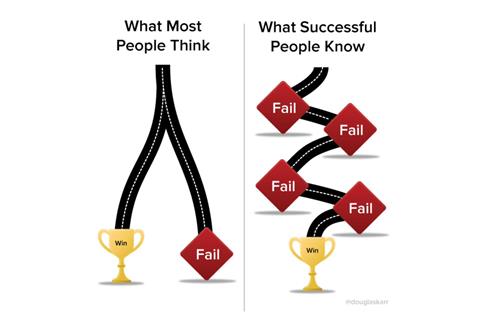




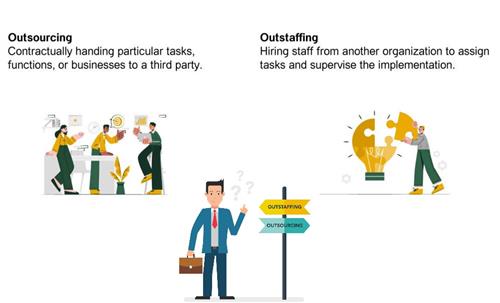

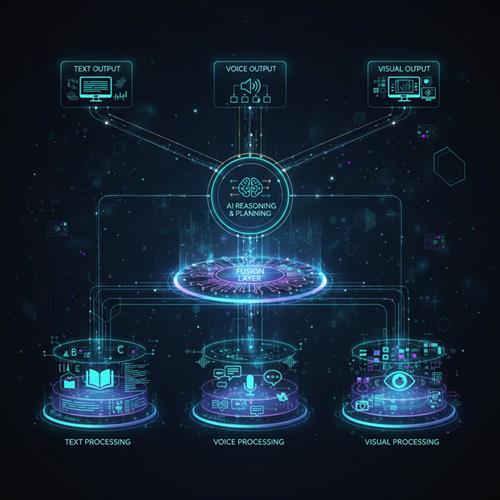



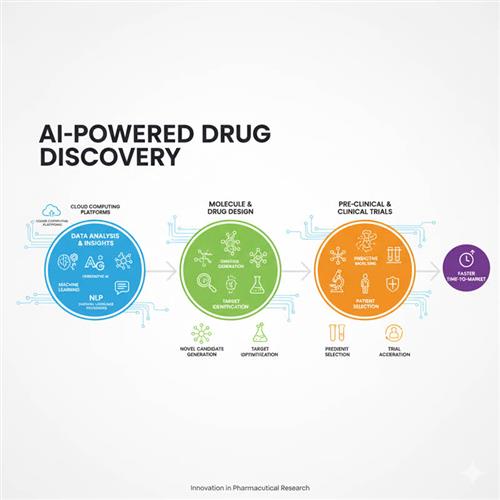


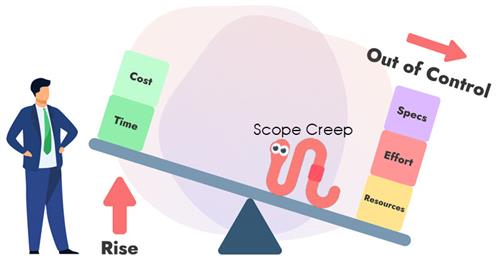











 Link copied!
Link copied!